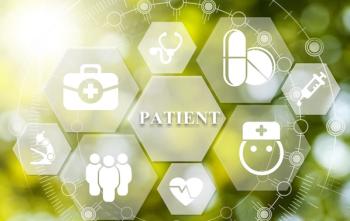
mHealth in Clinical Trials: State of the Union
The potential for mHealth to positively impact clinical trials is extraordinary, but as we’re in the early days, there are far more questions than answers.
The potential for mHealth to positively impact clinical trials is extraordinary, but as we’re in the early days, there are far more questions than answers.
Applied Clinical Trials conducted a
The first challenge with mHealth, which the survey highlights, is its baseline definition. In the broadest sense, mobile devices have been used in clinical trials for decades. Patients have been self-reporting using special purposes mobile devices dating back to Palm Pilots. However, the use of sensors, wearables, smartphones and apps is new and, as a result, comes with “new technology” challenges including regulatory ambiguity.
So when we refer to “mHealth”, does this include a site using a laptop? Perhaps, but we probably mean instrumenting patients with sensors, wearables and apps and engaging with them in new and innovative ways.
Generally speaking, the top benefit/value of mHealth is clear: better data. For example, unlike site-captured and patient-reported, patient data from passive sensors and wearables is objective, it’s eSource, it’s continuous and it’s real world. It can be used to correlate with other data types, like patient-reported outcomes.
We do have to be mindful during these early days that just because the data is coming in digitally, it doesn’t mean it’s accurate. There is considerable debate about the accuracy of device data and the relative value of precision. Conversely, just because data is captured by sites doesn’t mean it’s free from bias. For example, studies have proven the existence of “white coat hypertension.”
Back to benefits/values, “Improved Patient Adherence and Engagement” came in second and third demonstrating recognition of the changed patient experience. If patients are connected electronically, they know they can’t “eFudge” the responses-something we’ve seen with electronic patient-reported outcomes (ePRO). Further, patient volunteers desperately want to be engaged so, using social media and apps in the wider world as an example, any progress in the area will be warmly received, leading to greater adherence, lower dropout rates, etc.
mHealth also holds the potential to reduce the patient burden in the longer term, even reducing site visits and enabling remote participation. In fact, one value driver not reflected prominently in the survey is improving trial efficiency. This includes reduced monitoring, fewer site procedures and, ultimately, fewer visits.
However, the biggest omission in the area of benefits/values is an exciting and potentially huge opportunity for mHealth in clinical trials: the scientific value of this new data to researchers. Scientific value includes the potential to identify new “digital biomarkers” based on continuously monitored biometrics and patient activity. It includes the ability to predict physiological events. It includes the ability to complement traditional life science-based therapies with digital therapies that change behaviors and are driven by data science. The potential here is not incremental but truly transformative.
The most interesting question in the survey was “Who should be responsible for regulating the development and use of mHealth tools in clinical trials?” “FDA”, “the Industry Itself” and “Unsure” all received roughly equal responses highlighting the lack of a clear path forward. We suspect, had it been available, an option for “Industry & FDA” would have stood out. From a practical perspective, the industry and regulators will have to work together but industry will need to lead by sharing their experiences from the field-pilots, proof of concepts and studies-and proactively propose appropriate parameters to both educate and gain the confidence of regulators.
It is encouraging to observe the FDA for example speaking on this topic more often at industry events, but--short of explicit guidance--there is palpable fear of the “regulatory unknown..
Perhaps the most actionable insight from the survey comes from the perceived challenges. “Having the knowledge and skills” emerged as the top challenge, consistent with our experience. Without an abundance of completed studies to use as a baseline, the learning curve is steep.
To summarize:
- We’re clearly in the early stages
- The industry needs to build a knowledge base through real, hands-on experience
- Lots of work to do, especially regulatory guidance
- mHealth has the potential to not only turbocharge clinical trials, but also to completely transform clinical R&D
We expect mHealth adoption to track with the typical technology adoption lifecycle: there will be innovators, early adopters, the majority and laggards. While many are taking a “wait and see” posture, Medidata is investing heavily with the innovators (sponsors, CROs and device vendors) to work through the obstacles and realize the full value mHealth has to offer, both to improve trials and the patient experience and to transform R&D.
Many companies are creating strategies for mHealth, putting smart investment into it, and are well-positioned for competitive advantage in areas such as digital biomarkers. The learning curve is steep, so there may not be much time between “wait” and “too late”.
Kara Dennis, Managing Director, mHealth, Medidata Solutions
Newsletter
Stay current in clinical research with Applied Clinical Trials, providing expert insights, regulatory updates, and practical strategies for successful clinical trial design and execution.




